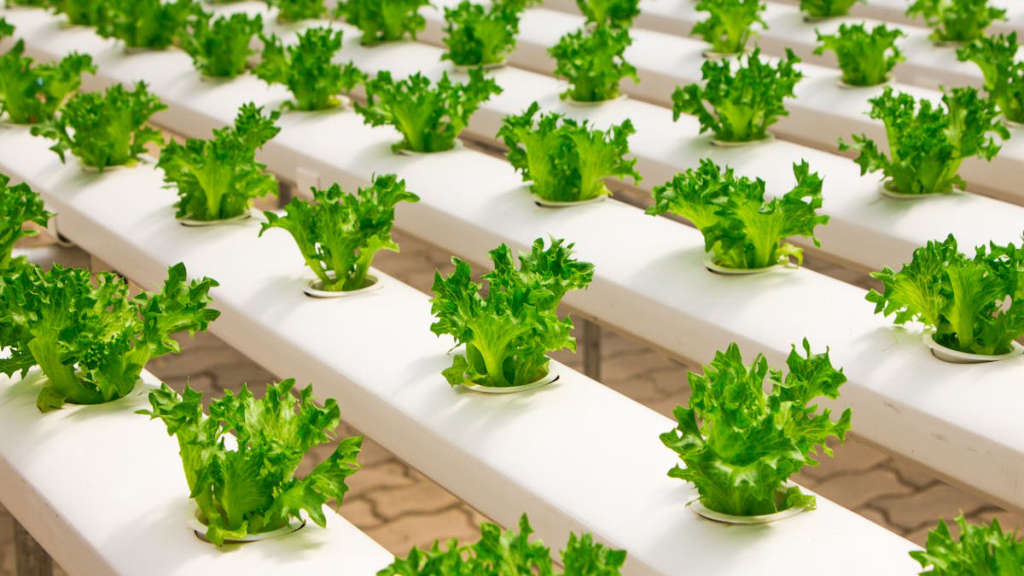The world faces an ever-increasing challenge in meeting the demands of a growing population while ensuring the sustainability of our food systems. In this context, aquaponic farming offers a fascinating glimpse into the future of agriculture, merging fish cultivation with plant production in a symbiotic environment. This innovative method not only maximizes resource efficiency, but also presents unique challenges that must be addressed. By exploring the potential benefits and hurdles of aquaponic farming, we can better understand how it might shape our food landscape in the years to come.
Main Points
- Understanding the basics of aquaponic farming.
- Exploring the environmental benefits of this sustainable practice.
- Identifying challenges and limitations in implementing aquaponic systems.

Harnessing Sustainable Practices: How Aquaponic Farming Revolutionizes Food Production
Aquaponic farming stands at the intersection of sustainability and innovation. This method combines aquaculture, the practice of raising fish, with hydroponics, the cultivation of plants in a water-based environment. Together, they create a closed-loop system that maximizes resource efficiency. The importance of this practice grows as we face increasing environmental challenges and food security issues globally.
The Symphony of Fish and Plants
In an aquaponic system, fish waste serves as a nutrient-rich fertilizer for plants. As plants absorb these nutrients, they purify the water, which is then recirculated back to the fish tanks. This mutually beneficial arrangement highlights how nature can inform agricultural practices. However, implementing aquaponics requires a deep understanding of both aquatic and terrestrial ecosystems.
Benefits of Aquaponic Farming
Transitioning to aquaponic farming brings forth numerous advantages, making it a compelling choice for modern food production. Here are some key benefits:
- Water Efficiency: Aquaponics uses up to 90% less water compared to traditional farming methods. This conservation is crucial, especially in arid regions where water scarcity poses severe challenges.
- Space Utilization: Aquaponic systems can be set up vertically, allowing for high-density farming even in urban environments. This feature makes it possible to produce food close to consumers, reducing transportation costs and emissions.
- Organic Produce: The absence of synthetic fertilizers and pesticides results in healthier, organic food products. Consumers increasingly seek clean, safe, and sustainable options, and aquaponics fits this demand perfectly.
Challenges to Consider
Despite its numerous benefits, aquaponic farming is not without challenges. Potential risks include:
- Technical Expertise: Understanding the delicate balance between fish and plant health requires specialized knowledge. Farmers must be willing to invest in education and management.
- Initial Investment: Setting up an aquaponic system can be costly. However, the long-term savings on water and fertilizer can offset these initial expenses.
- Market Acceptance: As a relatively new method, there may be skepticism about aquaponically grown products compared to conventionally farmed ones. Building trust and educating the market is essential.
In conclusion, while aquaponic farming presents both opportunities and challenges, its potential to transform food production practices is undeniable. By promoting sustainability and efficiency, we can pave the way for a more resilient and secure food system. Whether you are a seasoned farmer or someone curious about sustainable practices, exploring the world of aquaponics could lead to new horizons in agriculture.

Balancing Act: Overcoming the Key Challenges in Aquaponic Systems
Aquaponics represents a fascinating fusion of aquaculture and hydroponics, offering a sustainable method of food production. However, despite the appealing nature of such a system, several challenges must be navigated to achieve optimal results. Understanding these challenges is crucial for anyone venturing into the world of aquaponics.
Understanding the System Dynamics
The very essence of an aquaponic system lies in its balance—a delicate interplay between fish and plants. Fish waste serves as a nutrient source for plants, while the plants, in turn, purify the water for the fish. Yet, achieving this harmony is not always straightforward. Each species involved has specific requirements, and mismanaging any aspect can lead to cascading problems.
Nutrient Imbalance
One of the predominant challenges is maintaining nutrient levels, which can often lead to imbalances. Different plants have varying nutrient needs, and not all fish waste provides a balanced diet for every type of crop. For instance, while leafy greens might thrive, fruit-bearing plants may struggle without additional nutrients. Thus, careful monitoring and potential supplementation become necessary to ensure all components flourish.
Pest Management Practices
The presence of pests can wreak havoc in an aquaponic system. Unlike traditional farming methods that allow for a wide array of pesticides, aquaponics limits chemical intervention because of its closed-loop nature. Instead, natural pest control methods, such as introducing beneficial insects or employing companion planting, must be considered. However, this can lead to unintended consequences. For example, the introduction of a new species might upset the existing balance, potentially harming the fish.
Water Quality Challenges
Water quality is a critical aspect that can often be overlooked. Parameters such as pH, ammonia, nitrites, and nitrates need to be closely monitored. A sudden fluctuation in these parameters can lead to stress for both fish and plants. Regular testing and immediate adjustments are essential but can be labor-intensive. As a result, understanding the cycling process is vital for success. A lapse in managing water quality can compromise the entire system.
The Learning Curve
Moreover, there is a steep learning curve associated with managing an aquaponic system effectively. Newcomers might find it overwhelming to grasp the interdependencies and the breadth of knowledge required. Experimentation and patience are crucial. Mistakes will be made, but these are often the best teachers. It’s important to document experiences and adjust practices over time.
Conclusion
While the challenges in aquaponics can be daunting, they are not insurmountable. A dedicated approach combined with a passion for learning can turn these hurdles into stepping stones. By understanding and addressing the complexities involved, one can achieve the fine balance necessary for a thriving aquaponic ecosystem. Remember, the journey in aquaponics is as rewarding as the harvest it yields.
| Challenge | Solution |
|---|---|
| Nutrient Imbalance | Regular monitoring and nutrient supplementation |
| Pest Management | Natural pest control methods |
| Water Quality | Frequent testing and adjustments |
| Learning Curve | Patience and documentation of experiences |
By embracing these challenges, aquaponics can indeed become a flourishing venture, uniquely poised to contribute to sustainable food production.

Nutrient-Rich and Eco-Friendly: The Health Benefits of Consuming Aquaponically Grown Foods
In recent years, the growing awareness of sustainable agriculture has led to a surge in interest in aquaponics. This innovative farming method combines aquaculture (the cultivation of fish) with hydroponics (the growing of plants in water) in a symbiotic environment. The result is a highly efficient system that not only produces nutrient-rich foods but also benefits the environment. Understanding the health benefits of consuming aquaponically grown foods can be insightful for those seeking to lead a healthier lifestyle.
What Makes Aquaponically Grown Foods Unique?
First and foremost, aquaponically grown foods inherit essential nutrients from their unique growing conditions. In an aquaponic system, fish waste serves as a natural fertilizer, supplying vital nutrients directly to the plants. Consequently, this eliminates the need for synthetic fertilizers. As plants absorb these nutrients, they flourish, resulting in produce that is often richer in flavor and nutrients than conventionally grown counterparts.
Moreover, the method promotes biodiversity. Both fish and plants coexist, creating a balanced ecosystem that enhances the growth of both. When consuming aquaponically grown foods, you’re not just nourishing your body with essential vitamins and minerals; you are also consuming a product that supports ecological balance. Additionally, many consumers appreciate the superior taste, often noting that the freshness of these foods is unparalleled.
The Health Benefits of Aquaponically Grown Foods
One of the most compelling reasons to choose nutrient-rich aquaponically grown foods is their superior nutritional profile. These foods tend to be packed with vitamins, minerals, and beneficial compounds. For instance, leafy greens and herbs thrive in aquaponic systems, providing high doses of antioxidants and essential nutrients that support overall health.
Furthermore, the water in aquaponic systems is continuously recirculated and filtered, leading to minimal environmental contamination. This means that you can enjoy your meals with peace of mind, knowing that they contain fewer harmful pesticides and chemicals. In an era when food safety is a growing concern, aquaponics presents a reassuring alternative.
Moreover, the cultivation of fish alongside plants provides additional health benefits. Fish, particularly varieties like tilapia and trout, are excellent sources of protein and omega-3 fatty acids, which are crucial for heart health. By incorporating both fish and greens from an aquaponic system into your diet, you optimize your nutrient intake and promote a balanced diet.
The Environmental Advantages
Choosing to consume aquaponically grown foods extends beyond personal health. This farming method utilizes significantly less water than traditional agriculture, making it a sustainable choice in regions facing water scarcity. Because the water in aquaponic systems is recirculated, the entire setup is highly efficient, minimizing waste. This means that every nutrient-rich bite contributes to a more sustainable future.
As we navigate the complexities surrounding food production and environmental impact, aquaponics stands out as a beacon of hope. The system’s ability to produce food with reduced ecological footprints highlights the importance of innovative agricultural practices. By choosing to support aquaponically grown foods, consumers can play a vital role in fostering sustainability.
In conclusion, the health benefits of consuming aquaponically grown foods are manifold. From their enriched nutritional profile to the eco-friendly nature of their cultivation, these foods represent a conscientious choice for health-conscious individuals. By embracing this sustainable and nutrient-rich approach to food production, we not only enhance our own well-being but also contribute to a healthier planet.
Conclusion
The journey through the world of aquaponic farming reveals a harmonious blend of nature and technology. By integrating fish farming with plant cultivation, we not only create a sustainable food source but also foster a deeper connection with our environment. Many people might initially see it as a complex system, yet, with a little understanding, anyone can appreciate its simplicity and benefits. As we consider the environmental challenges we face today, adopting aquaponic practices might just be the innovative solution we need. Ultimately, it encourages us to rethink our relationship with food production and highlights the importance of sustainability in our daily lives.
Frequently Asked Questions
What is aquaponic farming?
Aquaponic farming is a sustainable agricultural system that combines aquaculture (raising fish) and hydroponics (growing plants in water) in a symbiotic environment. The waste produced by the fish provides nutrients for the plants, while the plants help to filter and clean the water for the fish.
What are the benefits of aquaponic farming?
The benefits of aquaponic farming include reduced water consumption, faster plant growth, the ability to grow a variety of crops, and the production of both fish and vegetables in the same system. Additionally, it minimizes the need for chemical fertilizers and pesticides, making it an environmentally friendly option.
How do I start an aquaponic farm?
To start an aquaponic farm, you need to design your system, select the right fish and plants, and ensure you have the necessary equipment such as a fish tank, grow beds, and a water pump. It’s important to research and plan carefully, considering factors like location, climate, and available resources before setting up your system.